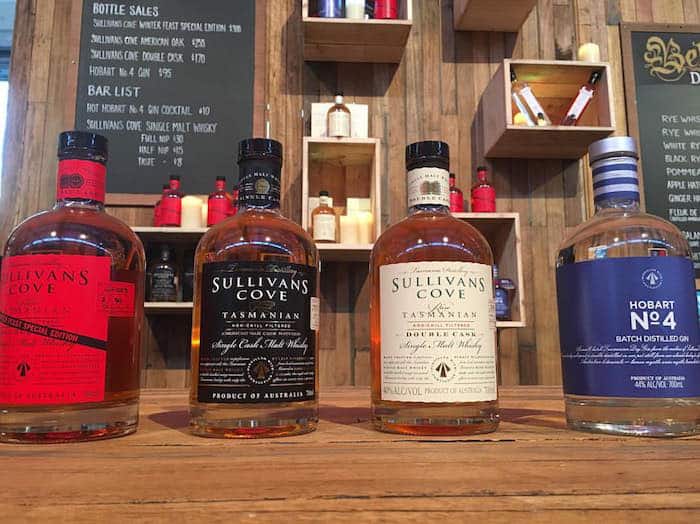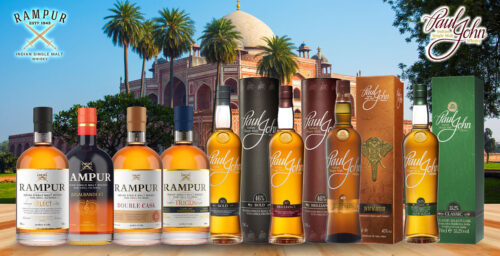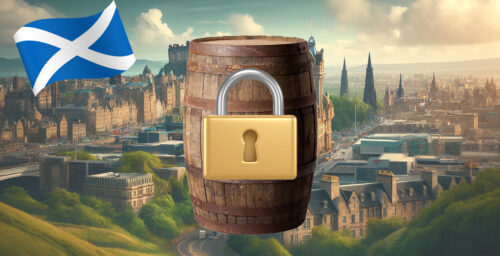Whisky has become a global phenomenon in recent years, what with border-hopping micro-distilling, experimental grains, the revived cocktail culture, and a burgeoning international appreciation of brown spirits. The whiskies of Australia and New Zealand are flapping on wider wings as well: in 2014, Australia’s Sullivan’s Cove French Cask won a “World’s Best Malt Whisky” from Whisky Magazine, and New Zealand’s Thomson won a double gold for their 18-year-old Single Cask Single Malt at the San Francisco World Spirits Competition 2014.
But it’s been a long journey for both countries to make their spirits mark, with some long spells of dry casks and dubious production. Consider Australia: the Australians are no strangers to malted grain—their dedication to their beer is fierce, and that dedication has had well over a century to age. During the 19th and part of the 20th centuries, Australia was the fourth-largest producer of whisky in the world, but by the 1980s, all of its distilleries had closed. Tasmania had its first legal distillery in 1822, which, along with some other struggling distilling operations, was closed in 1839 and the practice banned.

Of course, backyard moonshining never lost its luster, but it took a mere 150 years or so to get it going again, when a fellow named Bill Lark took account of Tasmania’s soil, strong barley crops, good water, easily sourced highland peat—and thirst. His overcoming of legal hurdles in 1992 in establishing Lark Distillery (a Jim Murray “Liquid Gold” winner in 2014) set other craft distillers to join the race, and now there are a double-handful of distilleries in Tasmania, and several on the mainland. Notable between both areas are Tasmania Distillery (Sullivans Cove), Old Hobart Distillery (OveReem), Hellyer’s Road, Nant, Belgrove, Timboon, Cradle Mountain, Limeburners (their single-malt another of Jim Murray’s “Liquid Gold” designates), Overeems, and Applewood, among others. Their work has brought Australian whisky from barely registering on the scale to world-class—and quickly.
New Zealand Zeal
New Zealand’s whisky industry has as many tangles and twists as its Aussie counterparts. The Kiwis established Crown in 1870, a legal distillery that lost its crown in only three years under the weight of government regulations, the same fate that befell the New Zealand Distillery. The impetus to go legal again took about a century, gaining its most traction when Willowbank, also called Wilson’s Distillery, in Dunedin was opened in 1969, with modest output. Willowbank’s purchase by Seagram in the 1980s improved quality, production and distribution, but when Seagram sold it to Fosters in 1997, the beer brewers shuttered its doors.
However, behind those doors were many, many casks of whisky. The New Zealand Whisky Company of Oamaru bought most of the stock at auction, and has been releasing prized (and award-winning) bottlings—many of them cask-strength—of those aged spirits over the past few years. Thomson’s, which sells some of that Willowbank stock under its own label, opened a distillery in Riverhead in 2014 and hopes to release a premium single-malt in years to come. And the Kiwi Spirit Distillery in Takaka retails a six-year-old single-malt aged in honey-mead barrels that they’ve dubbed Waitui Manuka Honey Whisky. Though New Zealand’s whisky boat isn’t motoring as fast as Australia’s, it’s definitely out of the harbor.
A Nod to the Scots, with a Homegrown Tweak
Many of the initial 19th-century efforts in both Australia and New Zealand to marry grain, water and time through the still came at the hands of enterprising immigrant Scots, and there remains a distinct tang of Scotland in some of the single-malt results. The local barley in each country does differ, as does the peat, but yet some strain of kilt-wearing tribal blood runs in those distillates. However, much Australian whisky is distilled in small pot stills and somewhat smaller casks than the typical Scottish production.
Temperature also plays a part: Australia’s thermometers consistently rise higher than Scotland’s, pulling more flavor notes out of the aging casks. Casks too show variety, from used American Oak bourbon barrels to the increasingly popular sherry butts, to secondary-use wine barrels. It’s always tricky to suggest a generalized flavor profile on a country’s whiskies, but putting vanilla, oak and apples into the mix stands on safe ground, and lemongrass and hay also wend their way into taste profiles.
Looking at some of the New Zealand Thomson offerings from the Willowbank purchase, the tasting profiles use descriptors like chocolate, coffee, coconut and iodine (!) for a sampling of their bottlings, many of which are over 20 years old. And some of the single-bottle prices reflect that hoary provenance.
Drinkers who haven’t had the chance at a dram of New Zealand or Australian whisky have something to look forward to—and with both countries ramping up production, that looking forward should be promising for time to come.
Here’s a nice Manspace roundup (with tasting profiles) of what they see as the Top Ten Australian whiskies.








